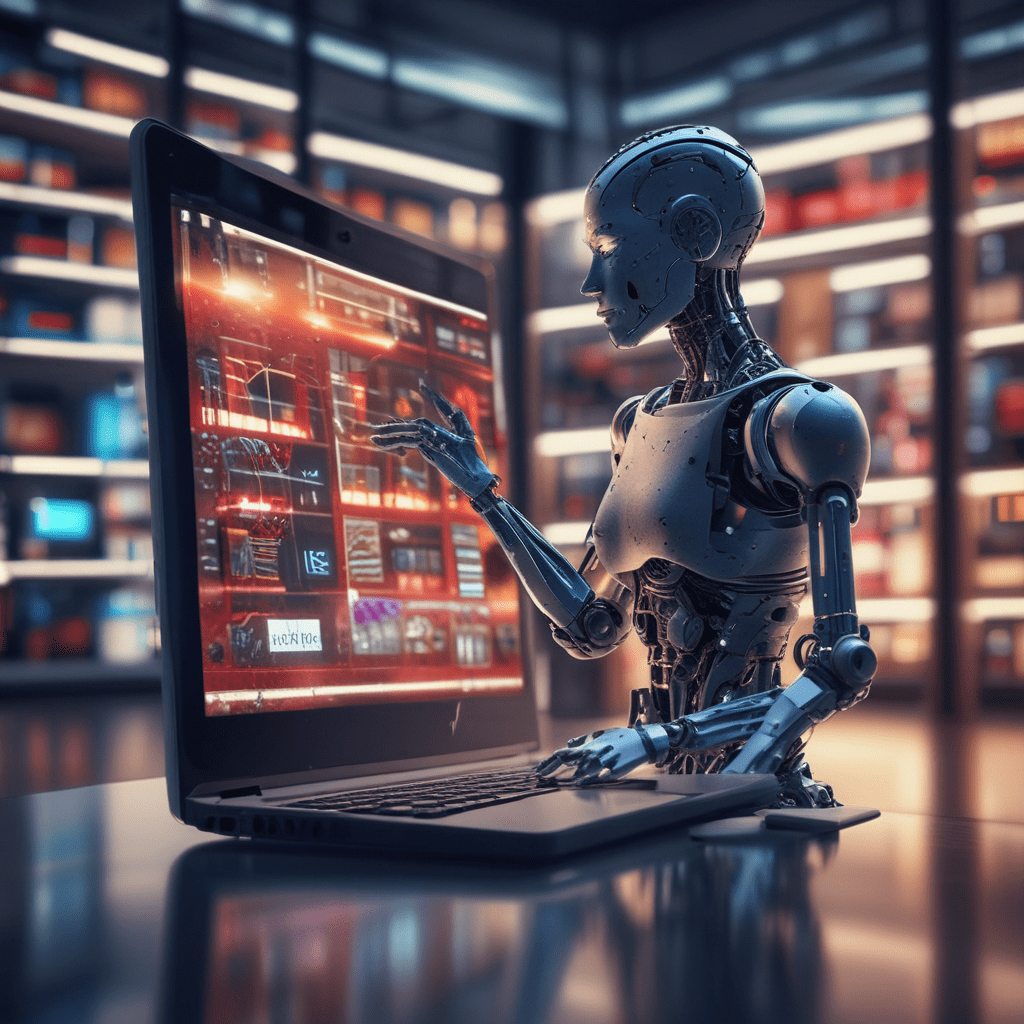The Evolution of Retail: Adapting to Technological Advancements
Introduction
Over the years, the retail industry has undergone significant transformations as technology advanced. From traditional brick-and-mortar stores to the rise of e-commerce, technology has reshaped the way businesses operate and customers shop. In this article, we will explore the various ways stores have changed as technology improved, revolutionizing the retail landscape.
1. The Emergence of Online Shopping
With the advent of the internet, the rise of online shopping platforms marked a significant shift in consumer behavior. Customers could now browse and purchase products from the comfort of their homes, leading to the growth of e-commerce giants like Amazon and eBay.
Impact:
Online shopping provided convenience and accessibility to customers, enabling them to compare prices, read reviews, and access a wide range of products from around the globe. This accessibility revolutionized the retail industry and forced traditional stores to adapt or risk losing customers.
2. Mobile Shopping and the Rise of Apps
The introduction of smartphones and mobile apps further transformed the retail landscape. Customers could now shop on the go, making purchases anytime and anywhere. Mobile apps provided retailers with an avenue to personalize shopping experiences and offer tailored recommendations.
Impact:
Mobile shopping created new opportunities for retailers to engage with customers and promote their products. Apps allowed for seamless integration of loyalty programs, real-time notifications, and personalized marketing strategies, enhancing customer loyalty and satisfaction.
3. The Integration of Big Data and Analytics
As technology advanced, retailers began harnessing the power of big data and analytics to gain valuable insights into consumer behavior and preferences. Analyzing vast amounts of data allowed businesses to make data-driven decisions, optimize inventory management, and personalize marketing campaigns.
Impact:
Big data and analytics enabled retailers to improve operational efficiency, maximize sales, and create personalized shopping experiences. By understanding customer preferences, retailers could tailor their offerings and promotions, leading to increased customer satisfaction and retention.
4. Contactless Payments and Virtual Wallets
The introduction of contactless payments and virtual wallets revolutionized the payment process. Customers could simply tap their cards or use their smartphones to make payments, eliminating the need for physical cash or card swipes.
Impact:
Contactless payments and virtual wallets offered convenience, security, and speed during the checkout process. Additionally, these technologies reduced the risk of fraud and provided retailers with valuable transaction data for analysis and personalized marketing.
5. The Rise of Augmented Reality (AR) and Virtual Reality (VR)
Augmented Reality (AR) and Virtual Reality (VR) technologies have had a significant impact on the retail industry. Customers can now virtually try on clothes, visualize furniture in their homes, or experience immersive shopping experiences through virtual reality.
Impact:
AR and VR technologies enhance the customer experience by bridging the gap between physical and digital shopping. Customers can make more informed purchasing decisions, ultimately reducing returns and increasing customer satisfaction.
6. Automation and Self-Service Options
Technology has enabled the automation of various retail processes, reducing human dependency and optimizing efficiency. Self-checkout systems, automated inventory management, and robotic assistance are examples of how automation has enhanced the retail experience.
Impact:
Automation and self-service options have streamlined operations, minimized errors, and improved customer service. By automating repetitive tasks, retailers can allocate resources elsewhere and focus on delivering personalized, value-added services.
7. Enhanced Customer Relationship Management (CRM) Systems
CRM systems have evolved significantly with technological advancements. Retailers now have access to centralized databases, enabling them to track customer interactions, preferences, and purchase histories. This data helps businesses provide more personalized and targeted marketing campaigns.
Impact:
Enhanced CRM systems allow retailers to build stronger customer relationships, improve loyalty, and drive repeat business. By understanding customers’ needs and preferences, retailers can create tailored experiences and targeted promotions, increasing overall customer satisfaction and revenue.
FAQ
1. How has technology influenced the retail industry?
Technology has revolutionized the retail industry by introducing online shopping, mobile apps, big data analytics, contactless payments, AR/VR, automation, and enhanced CRM systems. These advancements have improved convenience, personalization, efficiency, and customer experiences.
2. What are the benefits of online shopping?
Online shopping provides convenience, access to a wide range of products, the ability to compare prices and read reviews, and the flexibility to shop anytime and anywhere.
3. How has big data analytics benefited retailers?
Big data analytics enables retailers to gain insights into consumer behavior, optimize inventory management, and personalize marketing campaigns. It helps retailers make data-driven decisions, improve operational efficiency, and enhance customer satisfaction.
4. What is the impact of augmented reality and virtual reality on the retail industry?
Augmented reality and virtual reality technologies enhance the customer experience by enabling virtual try-ons, visualizing products in real-world scenarios, and creating immersive shopping experiences. This technology helps customers make informed purchase decisions and improves customer satisfaction.
5. How does automation benefit the retail industry?
Automation reduces human dependency, streamlines operations, minimizes errors, and improves customer service. Self-checkout systems, automated inventory management, and robotic assistance enhance efficiency, enabling retailers to focus on personalized, value-added services.
6. How do enhanced CRM systems help retailers?
Enhanced CRM systems provide retailers with centralized databases to track customer interactions, preferences, and purchase histories. This data helps businesses deliver personalized experiences, target marketing campaigns, improve customer loyalty, and drive repeat business.


